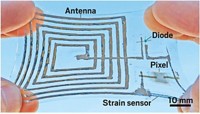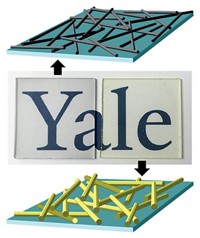Advertisement
Grab your lab coat. Let's get started
Welcome!
Welcome!
Create an account below to get 6 C&EN articles per month, receive newsletters and more - all free.
It seems this is your first time logging in online. Please enter the following information to continue.
As an ACS member you automatically get access to this site. All we need is few more details to create your reading experience.
Not you? Sign in with a different account.
Not you? Sign in with a different account.
ERROR 1
ERROR 1
ERROR 2
ERROR 2
ERROR 2
ERROR 2
ERROR 2
Password and Confirm password must match.
If you have an ACS member number, please enter it here so we can link this account to your membership. (optional)
ERROR 2
ACS values your privacy. By submitting your information, you are gaining access to C&EN and subscribing to our weekly newsletter. We use the information you provide to make your reading experience better, and we will never sell your data to third party members.
Materials
Fluoropolymer Drops Graphene’s Resistance
An easily made graphene-polymer film shows promise for transparent, flexible electrodes
by Journal News and Community
May 14, 2012
| A version of this story appeared in
Volume 90, Issue 20
By laminating graphene with a fluoropolymer layer, researchers have made flexible, transparent, and highly conductive films (ACS Nano, DOI: 10.1021/nn3010137). The films could find use as the transparent electrodes needed in organic light-emitting diodes, solar cells, and video displays, the researchers say. Electronics manufacturers currently use indium tin oxide (ITO) to make transparent electrodes. But to build foldable displays and solar cells, researchers want to replace this expensive material with cheaper, more flexible graphene. One major hurdle is graphene’s relatively high electrical resistance. To increase its conductance, Barbaros Özyilmaz of the National University of Singapore and colleagues used spin-coating to add a fluorinated copolymer layer to graphene. This fluoropolymer has dipolar charges on its surface that facilitate electron transfer back and forth to graphene, decreasing graphene’s resistance from about 500 ohms to 120 ohms; ITO’s resistance is about 100 ohms. Unlike previous methods to improve graphene’s conductance, this doping method is permanent and doesn’t damage the material, Özyilmaz says.





Join the conversation
Contact the reporter
Submit a Letter to the Editor for publication
Engage with us on Twitter